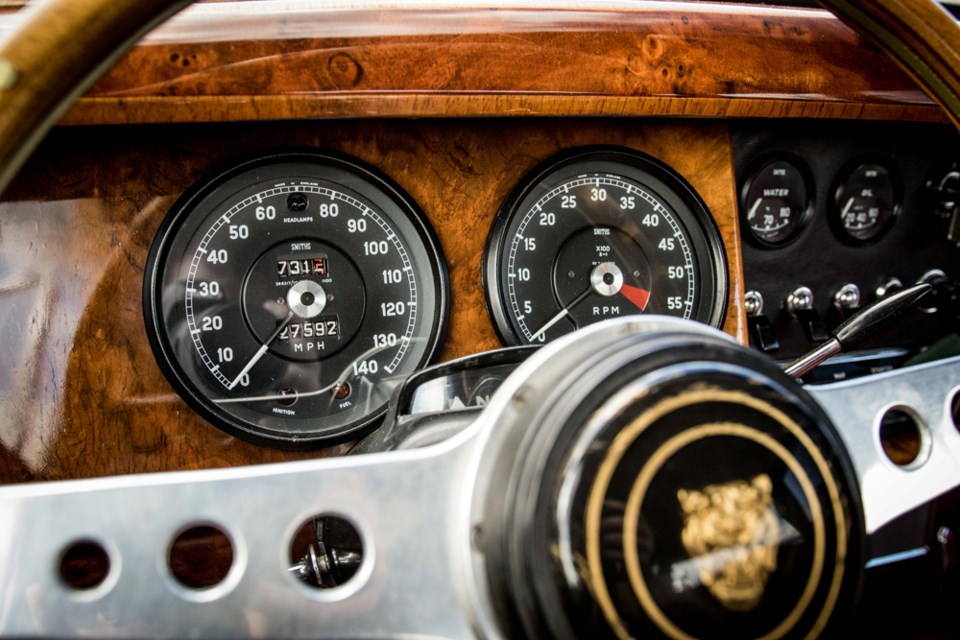This year’s All British Field Meet at VanDusen Botanical Garden was simply excellent.
The sun shone and the cars sparkled and I’m pretty sure I saw a guy in a captain’s hat walking around under a pink Japanese parasol. If you didn’t make it over there, well shame on you. It’s not like I didn’t tell you it was going to be great.
While the Jaguar MK I and II were the official stars of the show, there were plenty of other machines to admire, from stately Rolls-Royces to goofy Mini Mokes to sporting Morgans. I saw a Cosworth Sierra RS500, the works-prepped MGB GT from the Sebring endurance races, and a sky-blue Land Rover Series II. It was all wonderful.
What I most admired, however, was the startling number of people who weren’t old enough to have any sort of nostalgic connection to these cars. Millennials! They were everywhere!
It’s a concern to anyone who’s interested in classic cars that the hobby probably has an expiration date. I once interviewed Ted Wilkinson, the proprietor of Wilkinson’s Automobilia (a hobby shop now gone from its Broadway location, but still around online), and he talked about how he’d get a call every so often when someone would pass away and leave their collection. It was hard to know what to do with the stuff, Ted said, because tastes change – what’s the true value of a collection of classic Corgi toys?
To some extent, the same thing happens with cars. You can buy pretty much the nicest Model T or Model A you’d like for next-to-nothing, while an air-cooled Porsche 911 commands that you trade in a couple internal organs and a bag of rubies. Tastes change, and demand changes with them.
However, some things seem to remain constant. I’m not sure whether it’s a reaction to a life lived practically glued to a screen, but I keep running into more young people who are interested in just the oddest sorts of cars.
For instance, last year I was given the task of gathering together some cheap and cheerful mid-engined cars for a classic photo shoot. I found a retired Toyota enthusiast with an MR2, a middle-aged guy who had a Fiero 2M6 he’d owned since new, and a 21-year-old with a 1970s Fiat X1/9. He’d restored the car by watching YouTube videos, and had put something like 47,000 kilometres on it in a little over a year.
Obviously, upon hearing this I immediately fell over into a ditch. But having climbed back out again, and listened more carefully to the young man’s story, I realized I’d heard this tale before, dozens of times. It was a story of mechanical sympathy, of the desire to understand and master the inner workings of a machine. It was an extension of the human being as a user of tools.
Thus, I wasn’t surprised to run into a young guy with a Rover P3500 on a classic car tour, who told me he hadn’t ever really been into cars until he started working in the tech field. Keeping the machine running was his way of unwinding. He went on, at length, about the P3500’s near-miss at endurance racing glory, and yammered on about the suspension in an animated fashion. It was great.
You could say these examples are the exception that proves the rule, and that young people are, by-and-large, falling out of love with the car. It’s simply not true. While the necessity of owning an automobile isn’t quite the coming-of-age milestone it once was, an enthusiasm for the car seems to remain the same.
Further, there also seem to be fewer rules where the young are concerned. I have yet to meet a young person who’s absolutely into concourse-spec machines (I’m sure they’re out there though), but I have met plenty of ‘em who are interested in driving very long distances. They like to actually use their machines, and they aren’t bothered if they pick up a rock chip or two. They also don’t mind if the wheels aren’t perfectly period correct, or if the car is tweaked to have a bit more modern performance.
If the classic car community is to survive, there’s only one thing to be done. It’s not enough to polish up our cars and then stand around in a field rubbing elbows with people you already know. You’ve got to drive down to the gas station, buy a map, and then pick a random spot and chart the wriggliest way to get there.
When you put a car in a show, like the ABFM, it’s easy to get lost in the crowd. When you put it in the world, you inspire all sorts of other people to maybe bring theirs out too. Part of the ABFM is a post-event cruise up to Whistler, and about a week later, I know that a group of open cars went even further afield, for no other reason than the pure pleasure of it.
Doom and gloom headlines about the end of the automobile and the rise of autonomous eco-pods are easily digested and they sell well. We are, at heart, a bunch of Eeyores, willing to believe the worst for the future.
But stop worrying, and get out there and drive. It’s going to be a long, hot summer, and you live in a province that’s bigger than Texas by a third. The road awaits. No more excuses. Bring your parasol if you must.
Brendan McAleer is a freelance writer and automotive enthusiast. If you have a suggestion for a column, or would be interested in having your car club featured, please contact him at [email protected]. Follow Brendan on Twitter: @brendan_mcaleer.



